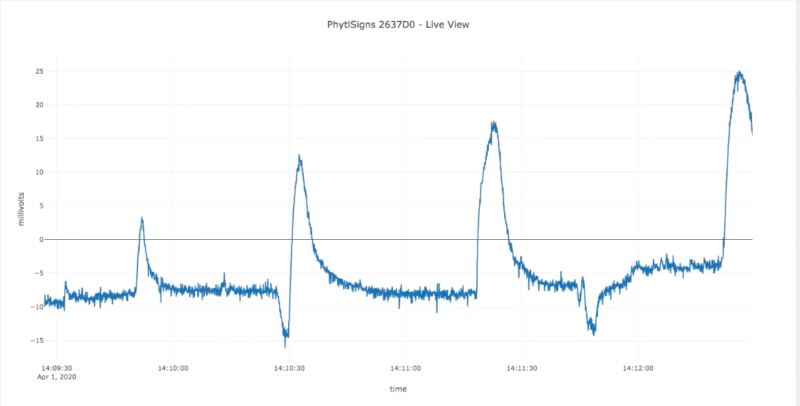
A sensor that can unravel what is going on with the plant would be a fine tool in data-driven greenhouse cultivation, Colinda de Beer contends.
In a previous column for Innovation Origins, I wrote about how growers can keep their crops healthy by detecting potential infestations via smell. With the help of an e-nose, it is possible to detect the threat of an infestation before it has even been spotted by a person.
Another way to receive an early warning is to measure the electrical signals in the plant. When I first heard of the application that a Swiss company is developing, I immediately thought of the 1973 book “The Secret Life of Plants” by Peter Tompkins and Christopher Bird. This book claims that plants have “feelings and emotions” and can even unmask the “killer” of their neighboring plant. To demonstrate this, a plant was hooked up to a lie detector. This would go off when the person who had cut a plant came into the room. But soon papers were written that debunked the claims that were made in this book.
Incidentally, the book also served as the basis for a 1979 documentary and soundtrack of the same name by Stevie Wonder.
There is no “paranormal” communication between plants and humans, but there are some botanical physiological signals that we are getting more adept at reading with the help of technology.
Electric signals
There are several ways in which a plant can transmit electrical signals. One way is through action potentials (AP). Basically, this works through the differences in concentrations of ions (gradient flux) such as hydrogen, potassium, chlorine, sodium or calcium in the plant cells. These differences can trigger flow or diffusion processes. This enables a plant to disseminate information over a greater distance. One example is sending a signal from the root of the plant to a stomata in the top of the plant. In the case of a tomato plant growing in a high-tech greenhouse, this can easily be a distance of 10 to 15 meters.
If the roots cannot absorb enough water from the substrate, a signal is then sent to the stomata in the leaves. Under ideal circumstances these stomata are receptive enough to absorb CO2 and exchange water and oxygen with the air in the greenhouse. However, if the plant is unable to absorb enough water, it must make sure that as little water as possible is wasted and its stomata close up. Hence, the signal to do this might be sent through this type of electrical signal.
Optimal use of resources
As a grower, you want the crop to grow under the most optimal conditions possible. It is important to know as soon as practicable if the conditions for the plant are not optimal. This will allow the grower to intervene quickly and ensure better growing conditions. In the case of a shortage of water in the substrate of a tomato crop, we already have sensors that are capable of measuring this. Neither too much nor too little water is good for a plant. With this kind of sensor, it is possible to check whether there is precisely the right amount of water that is needed. This is already a major improvement compared to how things were done in the past. Then, intervention only took place when it was physically visible on the plant that there was not enough water, as the plant would then start to droop.
However, this kind of moisture sensor is a derivative measurement. It might be the case that there is enough water but that the plant is still unable to absorb enough water. For example, because the amount of salts in the substrate is too high or if the substrate is very cold and the roots are consequently less active.
It is much nicer when you hear directly from the plant that there is not enough water on hand for proper photosynthesis and optimal growth. That’s where measuring the electrical signals in the plant comes in handy! If you can measure these signals, you will instantly know that something is up and you can act accordingly!
Swiss start-up
The Swiss startup PhytlSigns is developing a product to do exactly that. They themselves call it the “Fitbit for plants.” The system works with the insertion of thin needles at different points into the stem of a plant to pinpoint its electrical signals.
A very large number of data points are stored in this process. These are processed and interpreted through the application of machine learning. This entails a large number of data points that are continuously recorded at various spots in the plant.
Based on the algorithms, it should be possible to determine what exactly is going on. This is the challenge of utilizing this technology and putting it to practical use. As described earlier, the plant uses electrical signals to ‘communicate’ all kinds of different occurrences. But how do you know what the plant is actually signaling at any given moment?

Dictionary
What might help here is to trigger certain occurrences to unravel the language of the signals. This has been done, for instance, by infecting the crop with certain diseases and pests, inducing drought and heat stress, and by varying the amount of light.
The large amount of data in combination with the fact that many factors inside and outside the plant have an influence each other makes it quite a puzzle to come up with a good ‘dictionary’ for these measurements. However, this application is a great example of how a grower can apply technology to control their crop even better.
Far more research is needed before any grower can apply this type of technology in their greenhouse. Currently, tests with the system from PhytlSigns, among others, are taking place in tomato cultivation in the data-driven growing field lab of Tomatoworld.
Once this type of technology is widely available, it can also be used straight away in the next step to ensure that adjustments are also made immediately via a climate computer if, for example, the temperature in the greenhouse is set too low.
Sustainable and local cultivation
A sensor that can indicate exactly what is going on with the plant would be a fine tool for data-driven cultivation in greenhouses. This method of cultivation would make it possible to stop selling the end products of our Dutch high-tech cultivation across the world. We would then sell the technological solution that we developed in the form of high-tech greenhouses and knowledge. Instead of sending tomatoes around the world in airplanes, we would then help to build and remotely control the high-tech production locations. This could subsequently be done in close proximity to consumers in far-flung global places in the East and West.
As such, not a lie detector on the plant, but instead the measurement of physical signals and a ‘dictionary’ created with AI. I still find it really inspiring how technology can contribute to sustainability!





